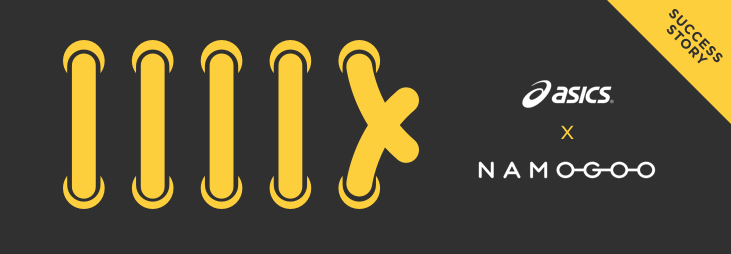One of the benefits of blocking Customer Journey Hijacking is that it offers companies an immediate boost in their conversion rates. Namogoo’s Customer Hijacking Prevention (CHP) solution blocks unauthorized ad injections in real time, and the results start to show up right away.
That’s why many of the case studies on our website tell the story of how a business rapidly improved its eCommerce KPIs.
Our most recently updated case study is different. It examines how ASICS – a major international producer of footwear and activewear – has used our CHP solution to block injected ads over the course of two years.
Although we had previously posted ASICS’s success story on our website, updating this story gave us an opportunity to present more of a long-term view of the ways preventing Customer Journey Hijacking can help a company achieve its eCommerce goals.
The most important statistic from this case study is that since ASICS started working with Namogoo, our technology has brought the company an increase of 3.2% in its overall conversion rate. We had already seen that our platform had quickly cut ASICS’s checkout abandonment rate by 4.8%, but the new data is particularly exciting in that it shows the sustained impact of our CHP solution over a longer period.
How typical is ASICS’s story?
Customer Journey Hijacking is a widespread and increasingly sophisticated phenomenon in which a user visiting an eCommerce website sees ads that are not actually part of the site. In some cases, the ads appear due to Wi-Fi hijacking – but the most common culprit is malware running on the end user’s device.
Many of the ads are designed to give the impression that they are part of the website the user is visiting – a particularly effective technique given that today’s consumers are largely unaware of the problem of Customer Journey Hijacking. Yet most injected ads (60% to 65%, according to data that we at Namogoo have collected) are designed to steal consumers away from one online store to a competitor.
While the frequency of Customer Journey Hijacking varies based on a variety of factors (including industry, device type, geographic location, time of year, and more), we typically see that these injected ads appear during 15% to 25% of user sessions. In contrast, visitors to ASICS’s website only viewed injected ads during 11.7% of their eCommerce sessions.
And how do the results ASICS has seen from our CHP solution compare with other companies’ results? While each company is different, we typically see that our platform enables them to boost their overall conversion rates by between 2% and 5%. That means that ASICS’s 3.2% overall conversion rate increase is well within the normal range.
After two years of helping ASICS boost its eCommerce KPIs by blocking injected ads, we’re proud to see that our solution consistently has such a powerful impact. We look forward to continuing to help the company achieve its online objectives by preventing injected ads from stealing prospective customers away.
How did ASICS become aware of the problem of Customer Journey Hijacking, how did they overcome it, and how has that success impacted their business results? Click below to read the success story.



